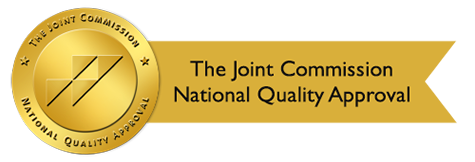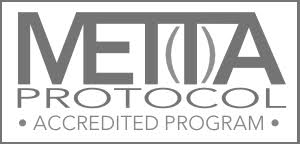Quitting suboxone is a difficult and exhausting process. It requires proper treatment, guidance, and medication, which usually require professional assistance. In addition, using suboxone, enables addictive behaviors, resulting in a lower chance of recovery during detox attempts. However, this does not mean that stopping suboxone abuse is impossible.
In order to understand how substance addiction recovery works, it is first important to know about this partial opioid agonist substance – suboxone.
What is Suboxone?
Suboxone is a complex prescription drug that treats opioid addiction. Even if its objective is to treat said addiction, you can still be dependent on the drug due to the addicting relief brought by taking suboxone. It also contains a combination of drugs, particularly naloxone and buprenorphine. The purpose of naloxone, or also known as Narcan, is to treat opioid overdose, while buprenorphine addresses opioid use disorder or opioid addiction.
Suboxone can easily be used as a substitute for professional help in an effort to self-medicate against opioid withdrawal. However, abusing this drug can happen despite the good intentions of using it. It is always wise to seek medical advice when taking the drug. Addiction to the substance due to self-treatment can be a problem when taking suboxone without proper prescription. Seek help from professional health services to administer both detoxification and addiction treatment. This ensures your steady recovery and prevents serious complications.
Safest Way to Detox from Suboxone Abuse
The safest way to stop taking suboxone is through a proper, planned, and personalized treatment plan. To be specific, inpatient suboxone detox treatment is a program that guides you in the process of recovery and heals your substance use disorder through appropriate medications. Treatment facilities safely administer the right treatment plan by setting up individual or group therapy, counseling sessions, and regular medical supervision. These efforts are meant to address your suboxone withdrawal symptoms and divert you from destructive behaviors. Since substance use disorders have negative mental and physical implications, self-detox is not advisable. Always seek medical advice from a doctor about the whole detox process.
There is information online saying how quick and short-term methods such as a rapid suboxone detox can cure suboxone dependence. However, there are not enough sources to support this claim. This can even be dangerous for you. Aside from the impending relapse tendencies brought by a quick detox, short-term methods often require large loads of alternative opioid-sufficiency medicine. This means that drug overdose, misuse, and new addiction can develop because of unsupervised recovery. Lastly, according to a study by the National Institute on Drug Abuse, suboxone or opioid withdrawal is not easier with rapid suboxone detox.
Long-term inpatient detox may take some time, but it is a safe, efficient, and effective way in tapering off suboxone. Seeking professional help may be scary at first, but it is necessary to regain a productive and fulfilling life free from drug addiction.
4 Helpful Tips to Make Suboxone Treatment More Manageable
Suboxone detox can be mentally draining and physically exhausting. It may even affect your mental health. In addition, detox will be even more difficult when you are not with your loved ones inside the treatment center. But to make the situation more manageable, there are useful tips that may help you in the detox process.
Seek peer and family support systems
Suboxone withdrawal symptoms may be more uncomfortable and difficult to experience if you feel that you are alone in your journey. Try to be engaged in peer support systems inside rehab centers, or even with your family if you are undergoing outpatient treatment. Having people who believe in you can go a long way.

Find new interests and hobbies
Finding and doing other activities, although temporary solutions, can distract you from suboxone withdrawal symptoms and other drug cravings. From fishing to meditation, there are multiple hobbies where you can choose to spend your time for the day. These activities will help burn idle moments that usually spirals down to negative thoughts.
Exercise daily and engage in physical activities
Nobody goes wrong with exercising daily. It has already been proven in multiple studies that working out boosts our mental health. To make exercise less boring, you can also do active recovery exercises while dancing and doing sports. Most treatment centers in California have grounds and spaces for physical activities. Make the most of these spaces!

Consult with your doctor and substance abuse counselor
During your substance abuse treatment, you may consult and raise your concerns to your doctor and counselor. Informing them about the difficulties you are experiencing, especially with suboxone withdrawal, can help them understand how to treat your drug addiction better. Addiction treatment facilities provide programs and personalized treatment plans to help in tapering off suboxone and coping with withdrawal symptoms during detox.
Common Risks Encountered When Getting Off Suboxone
Overcoming substance abuse does not progress in a linear path. There will be uncomfortable days when you will experience harsh withdrawal symptoms. Expect to experience negative physical and mental conditions if you want to stop taking suboxone. Withdrawal symptoms differ between opioids and other substances. For suboxone, the following are the reactions in the brain and body:
- Irritability and discomfort
- Muscle fatigue and pain
- Anxiety and tension
- Sweating and slight tremors
- Depression
- Nausea and headache
- Loss of appetite and motivation

In addition to these, the risks that you can encounter during suboxone addiction treatment can vary between individuals. Our bodies react differently during drug addiction treatment. Some may experience the symptoms to a greater degree and the others may only experience milder symptoms. Regardless of the degree, your assigned doctor or counselor will help you in managing these withdrawal symptoms throughout the detox. It is also important to remember that the common risks and symptoms are often just a result of going cold turkey; it is the reason why self-detox or self-medication is not advisable.
Suboxone Withdrawal Timeline
A complete withdrawal from suboxone usually takes two to six months. Although withdrawal takes a long time, it progresses through a trackable timeline with multiple stages. The following is a sample timeline of withdrawal from suboxone.
- Days 1-7: Physical symptoms, such as irritability, or the common risks that were mentioned earlier will show up during this time. If necessary, medical professionals will prescribe medications to ease the symptoms.
- Weeks 2-3: Psychological signs may start manifesting in these weeks. To be specific, anxiety may start to kick in.
- Weeks 4-6: After the first three weeks, depression and loss of motivation may come. Therapy sessions are often required during this time to address this.
- Month 2-3+: After the first two to three months, relapse may likely occur. Cravings can still happen even after many months of sobriety. This makes counseling and guidance important while recovering.
Suboxone Drug Treatment in California
In a nutshell, to safely recover from suboxone withdrawal symptoms, seeking medical help is crucial. There are American addiction centers that specialize in providing holistic therapy and medical support to help you stop taking suboxone.
Find a support group and a treatment center in California to guide you in managing your withdrawal symptoms. Seeking treatment may be scary at first. However, professional help will guarantee stable progress, which allows you to have a more productive life. Proper treatment decreases chances of relapse and prevents risks or complications.
At Roots Through Recovery, we provide addiction treatment programs designed for you to quit and stop taking suboxone. We have treatment plans that target specific withdrawal timelines, addressing difficulties that cannot be solved by self-medication. We are here to help.
Let us discuss how we can start you or your loved one’s recovery. Visit us at 3939 Atlantic Ave, Suite 102 Long Beach, CA 90807, or give us a call at 866-766-8776 to get started.




